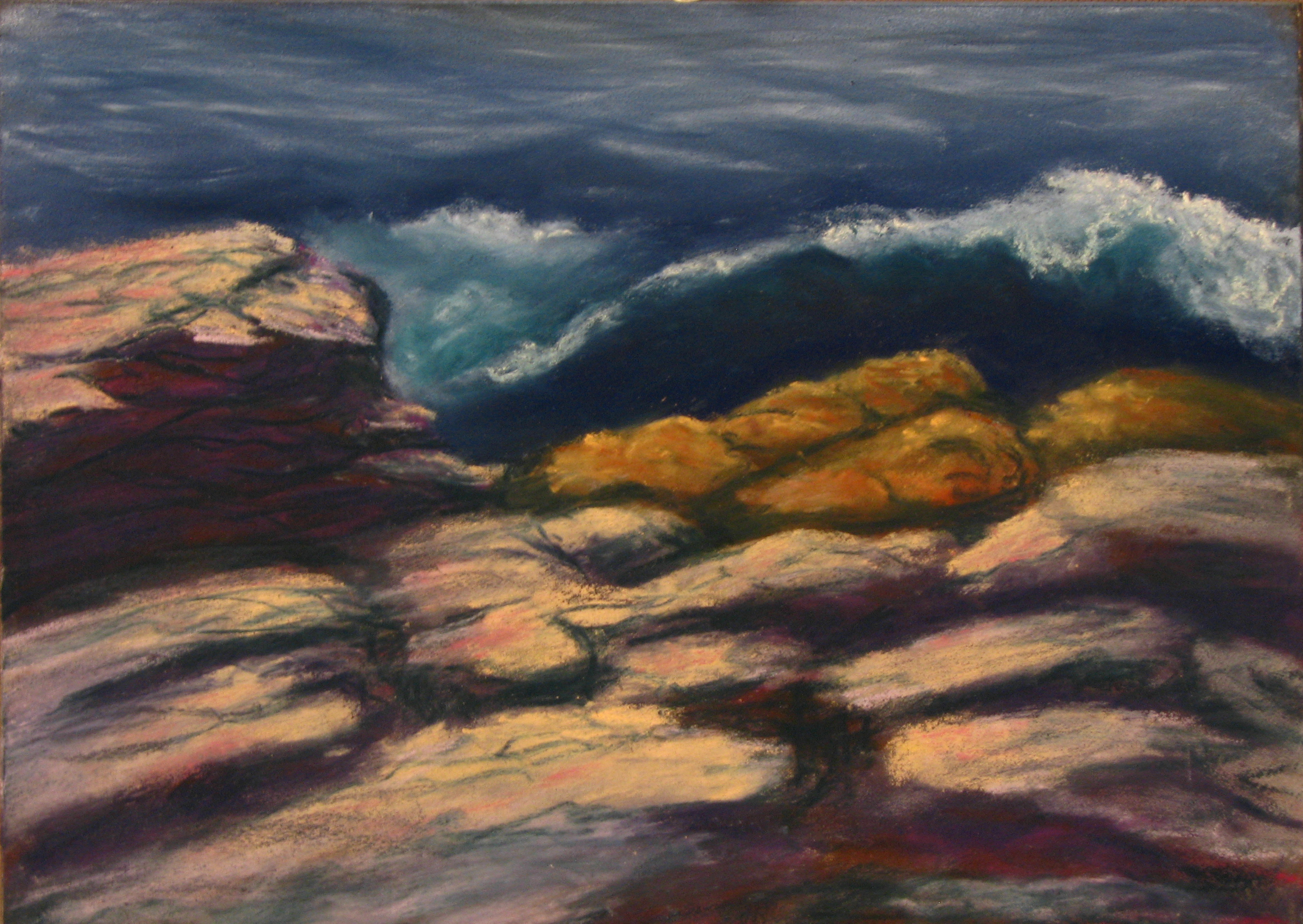Why do artists paint en plein air?
"Passing Showers" 10x10, oil on canvas
Ahhh, the romance of painting en plein air! How grand it is to follow in the traditions of Impressionists, to continue the practices of such greats as Monet, Van Gogh, Degas, and more! What joy to capture the fleeting moment, the changing light, and create a painterly snapshot of modern life! So, what is the reality? Is painting en plein air merely an artistic play date? A publicity tactic? Or is it an important exercise for improving our artistic skills?
The challenges and joy of working en plein air are difficult to describe to a non-painter. Imagine planning for a day at the beach, or a hike in the woods, or whatever your favorite outdoor location might be – consider all the paraphernalia you would need: sunscreen, insect repellent, water, food, appropriate footwear, umbrella for shade. And since you are planning to be in a beautiful place, you will probably want a good camera. You will be out all day, so knowing where a restroom is available would be a big plus. Now add to these preparations a need for a mini-studio: easel, panels for painting, sketchbook for rough drafts and quick planning, paints, thinners and cleaners, palette, brushes, palette knives, a platform or table for holding tools and supplies, maybe the luxury of a seat, and a means for transporting all of this from your car to the “perfect” viewing space…I usually have to collect it all up the night before, or I would never make it out the door while there was still light to paint by.
However, this is how we challenge ourselves as artists. This is the workout that improves our artistic fitness. Even if the resulting painting seems like a dismal failure, the session provides unique lessons in many areas. First, in the packing process we learn which items are the essential basics and which are nice luxuries—and, as we practice more, which “luxuries” are worth their weight in the field.
Next, we learn to edit and focus in on a subject as we choose where we set up and decide what we will paint. We do not have time to paint it all, and we must work fast before conditions of light, weather, tides, traffic, and all the other variables of life that can apply drastically change, (although this can also force us to complete an image from memory which is a different but also highly valuable exercise.)
Artists can approach this stage of the process differently, according to their preferences, plans, and styles. My personal choice is to start with my camera and sketchbook. The camera serves a dual purpose: it can be an excellent tool for quickly selecting a composition from the surroundings, and it also provides reference material for later studio paintings.
My sketchbook work allows me to roughly refine the composition and edit further what the image will include. I can quickly block in basic value structure (lights and darks) for the image and get a feel for whether I have edited sufficiently for the small size of my panel and limited time for working. Again, this can be an additional reference for studio work. A sketch that may have been rejected for a plein air project may work wonderfully for a larger, more involved studio piece. Or, it may be something only fit for the trash—nonetheless, sketching is always a nice warm-up for getting into a mental and physical “zone” for painting.
"Light Breeze", oil on yupo, 9x12
Finally, I am ready for the “sprint” of mixing color and applying paint. I do not have time to overthink the process, yet I am closely studying the realities of the color and light conditions, unaltered by a camera lens. Working on-site means I see the colors in the shadows and the impact of reflected light, which is generally lost in the photographic process. I see the multiple hues on a surface that photographs tend to homogenize and flatten. I also take home the experience of the place. My memory can later revisit the feel, fragrance and sound of spending a few hours in a single spot, contemplating a singular view.
Finally, and a highly important element, I almost always go painting en plein air with other artists. The encouragement, companionship and insights from my colleagues are priceless. Seeing their interpretation of the same place, and sometimes even an almost identical view, is informative and inspiring. I am emboldened to try new directions and techniques in my own work and am continually amazed at the unique perspective each artist provides in every venue.
Plein air painting is far more than a romantic tradition. Getting out into the field to paint strengthens us as artists in numerous ways, as well as providing non-artists a glimpse into the work that goes into making even a small, rough image. Next time you see us out with our paint boxes and easels, know that you are witnessing a unique opportunity of artistic growth.








